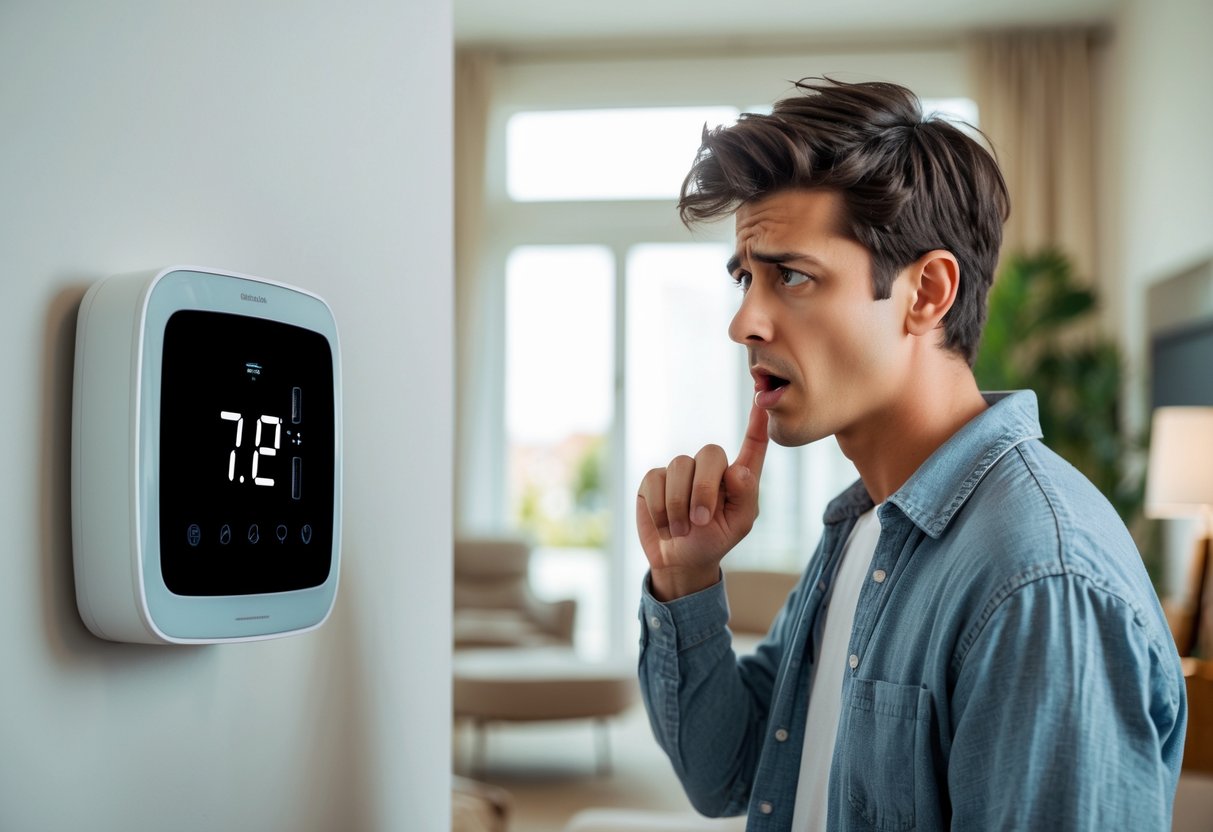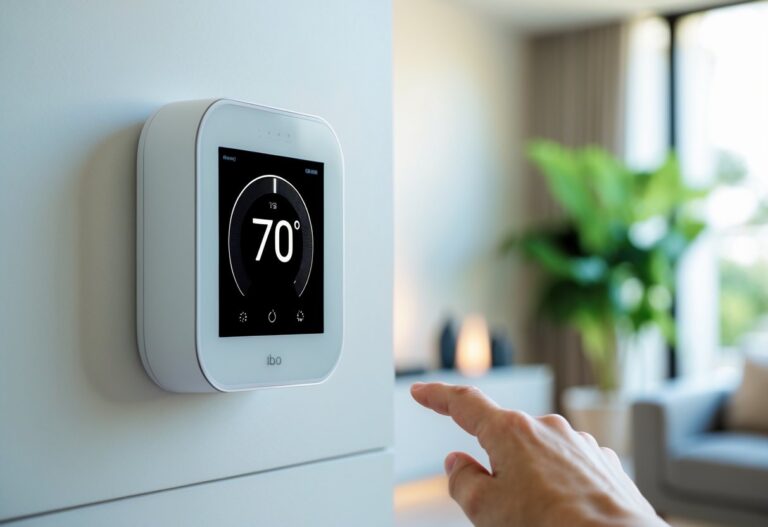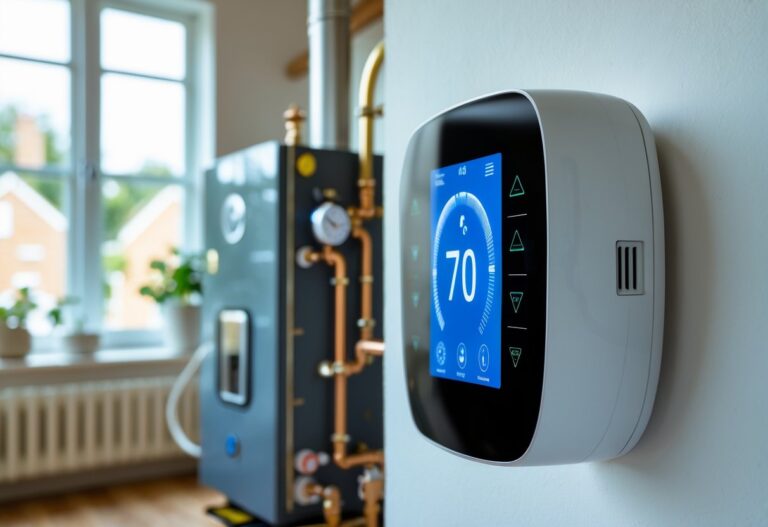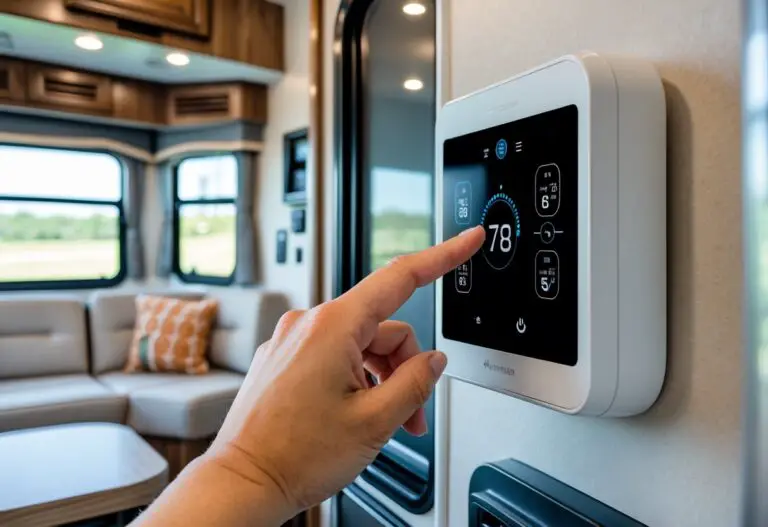When your home suddenly feels too hot or cold, your smart thermostat might be the cause. Smart thermostats often stop working because of issues with Wi-Fi, power supply, settings, or problems with the heating and cooling system itself. It can be frustrating when a device meant to make your life easier causes confusion or discomfort instead.

You might notice your wireless connection dropped, the screen is blank, or the temperature settings don’t match how your home feels. Sometimes, it’s as simple as a weak battery, an incorrect setting, or a problem with the app on your phone. Other times, there could be a deeper issue with your HVAC system that affects how the thermostat works.
Understanding the real reason your smart thermostat isn’t working can save time, money, and hassle. Stick around to find out what steps you should take to fix your thermostat and get your home back to the right temperature.
Key Takeaways
- Connection, power, and app problems are common with smart thermostats.
- HVAC issues can also make your smart thermostat stop working.
- Simple steps often help fix or prevent most thermostat problems.
Most Common Reasons Your Smart Thermostat Isn’t Working
If your smart thermostat is having issues, the problem usually involves its power supply, network connection, or settings. Addressing these areas can restore comfort and keep your system running efficiently.
Power Supply Issues
Smart thermostats need a stable power source to work. If the screen is blank or it won’t respond, first check the batteries if your model uses them. Replace old batteries with new ones to see if it powers on.
For hardwired thermostats, a power problem might come from the circuit breaker. Find your home’s breaker panel and see if any switches are in the “off” position. Reset tripped breakers, especially those controlling your HVAC system.
Sometimes, a device needs a C-wire (common wire) to deliver steady power. If your thermostat says “low battery” or keeps restarting, the C-wire may be loose or not installed. Make sure all wires are secure and properly connected before reattaching the thermostat.
A table of quick checks:
| Symptom | Likely Cause | Fix |
|---|---|---|
| Blank Screen | Dead battery | Replace batteries |
| Unresponsive | Tripped breaker | Reset breaker |
| Reboots | Loose wiring/C-wire | Check & secure wires |
Wi-Fi and Internet Connection Problems
Smart thermostats rely on Wi-Fi for remote control and updates. If your thermostat disconnects from Wi-Fi, check your internet connection first. Try loading a website on your phone to see if your whole network is down.
Weak Wi-Fi signals cause frequent dropouts. The router should be close enough to the thermostat, with minimal walls or obstacles between them. Consider moving the router or using a Wi-Fi extender to improve signal strength.
Incorrect passwords or outdated firmware can also cause issues. Double-check the network password in your thermostat settings. Restart both your router and thermostat if you can’t connect.
Tip: Smart thermostats need consistent internet access to save energy efficiently and support features like scheduling and learning.
Incorrect Settings or Schedules
Wrong settings can stop your smart thermostat from regulating home comfort. First, check if it’s set to “Heat,” “Cool,” or “Auto”—the wrong mode can leave your system idle.
Schedules control when your home heats or cools. If your system runs at odd hours or doesn’t turn on, open the device’s app to review your schedule. Adjust times to match your actual daily routine.
Some models need calibration. Compare the temperature reading with a standalone thermometer. If it’s off by several degrees, follow the app instructions to recalibrate or set an offset.
List of settings to check:
- Mode selection (Heat/Cool/Auto/Off)
- Temperature schedule
- Temperature calibration/offset
- Vacation or away modes
Fixing incorrect settings will help your home stay comfortable and your energy costs stay low.
Connectivity Troubleshooting: Wi-Fi, Bluetooth, and App Sync
Getting your smart thermostat to connect properly can sometimes be tricky. Problems with Wi-Fi, Bluetooth, or syncing to the app are very common and can keep your thermostat from working as expected.
Thermostat Not Connecting to Wi-Fi
Wi-Fi issues are one of the main reasons your smart thermostat may not respond. Start by checking if other devices can connect to your home Wi-Fi. If not, the problem might be with your router or internet connection, not the thermostat.
Try restarting your Wi-Fi router. You can also unplug your thermostat from the wall for about 30 seconds, then plug it back in. Most thermostats have a small Wi-Fi icon on the display. If you see an X through it or no icon at all, it is not connected.
Use this checklist:
| Step | What to Do |
|---|---|
| Router Reset | Unplug and replug the router |
| Wi-Fi Band | Use 2.4GHz Wi-Fi if possible |
| Network Name & Password | Make sure they are correct and simple |
| Max Devices | Check if router has too many devices connected |
| Permissions | Allow thermostat in your router’s settings |
If nothing works, check the thermostat’s manual for specific instructions or contact support.
Bluetooth Pairing and Mobile App Issues
Some smart thermostats use Bluetooth for setup and to sync with their mobile app. Problems often happen when your phone is too far from the thermostat or has Bluetooth turned off.
Make sure your phone is within 3-5 feet of the thermostat. Turn Bluetooth on and close any apps that use Bluetooth, like headphones or smart speakers. Sometimes, turning airplane mode on and then off again can reset the device connections.
Update the thermostat app and restart your phone if the app will not connect. Double-check that your device’s permissions allow the app to use Bluetooth and Wi-Fi. If you get stuck, try reinstalling the app or resetting the setup process from the beginning.
Smart Thermostat Not Communicating with Devices
Once connected, your thermostat should talk to other smart devices, such as Alexa, Google Home, or smart sensors. If it is not, first verify it is online in the app and on the Wi-Fi network.
Remove Wi-Fi extenders or boosters for setup, as these can block communication. Make sure your home network is not using extra security settings that could block the thermostat.
If your thermostat seems offline only within the smart home app, restart the app and check for updates. You may also need to reset the thermostat’s network settings or reboot your Wi-Fi router.
Sometimes, routers prevent new devices from connecting if too many are already online. Disconnect unused devices or increase your router’s device limits if you keep losing connections. If your smart thermostat still will not communicate, reaching out to customer support may be needed.
HVAC System Malfunctions Affecting Your Smart Thermostat
HVAC system malfunctions can make your smart thermostat act up or stop working. Power issues, wiring problems, or system failures can lead to temperature problems and loss of control over your home comfort.
HVAC System Not Responding
If your smart thermostat seems fine but your heating or cooling system will not turn on, the problem could be with the HVAC system itself.
Check the circuit breaker first. If the breaker is tripped, reset it and see if your HVAC unit starts working.
A blown fuse or a tripped breaker can cut power to both the HVAC system and the thermostat.
Also, make sure your thermostat is set to the correct mode—”heat” or “cool”—and the set point is above or below the current room temperature as needed. If the HVAC system still does not respond, there could be a deeper issue, such as a broken part inside the furnace or air conditioner.
Unusual noises, continuous cycling, or no airflow can signal a malfunction that needs expert attention. Power failures, dirty filters, or blocked vents are other possible causes.
Compatibility and Wiring Problems
Not every smart thermostat works with every HVAC system. Compatibility problems often cause issues such as the device not powering on, or your HVAC system not turning on at all.
Check the wiring connections at both the thermostat and at your HVAC control panel. Loose, damaged, or incorrectly attached wires are common reasons for smart thermostat problems.
Many smart thermostats need a “C-wire” (common wire) for power. If your old thermostat did not use one, your new smart thermostat might not get enough power.
Consult the thermostat installation guide to double-check compatible systems and wiring needs.
If you recently had a new HVAC system or thermostat installed and now have problems, compare your system type (such as gas, electric, single-stage, or multi-stage) with the thermostat’s listed compatibility.
Identifying When You Need an HVAC Technician
Some issues need a licensed HVAC technician to solve. If you see error codes on your thermostat that will not clear, the display will not light up even after checking power and batteries, or you smell burning near your furnace or air handler, contact a professional for help.
You should also call for help if there are ongoing temperature problems, such as frequent cycling on and off, no heating or cooling, or if you hear loud or unusual sounds from your HVAC equipment. Ignoring these signs can lead to more damage and costly repairs.
If you are unsure about handling wiring or circuit breakers, do not risk injury or damage. An HVAC technician has the training to safely troubleshoot and repair complex issues, restore your smart thermostat’s function, and protect your home comfort.
Advanced Issues and Reliability Tips
Some smart thermostat problems go beyond simple fixes like battery changes or app restarts. More serious issues often affect energy efficiency, comfort, and the reliability you expect from your thermostat.
Firmware and Software Glitches
Smart thermostats rely on software and firmware to run smoothly. Bugs and outdated firmware can cause connection problems, random reboots, or features that don’t work as expected.
To keep your device stable, regularly check for firmware updates in your thermostat’s app. Most brands release fixes to improve compatibility with new devices or address bugs.
If updates don’t solve the issue, try a soft reset first to avoid losing your settings. Sometimes, a full factory reset is needed, but it will erase all schedules and preferences.
When problems continue after updates and resets, check for app updates and make sure your Wi-Fi router’s software is also up to date. Tracking error patterns—such as disconnects or stuck screens—can help you identify if software is the cause.
Staying current with updates helps protect features like scheduling and remote control, which support both energy savings and home comfort.
Placement and Sensor Calibration
Where you install your smart thermostat affects how well it measures temperature. Putting it near air vents, in direct sunlight, or in rarely used rooms can lead to inaccurate readings.
A thermostat on an interior wall, away from windows and direct airflow, is best for an even measure of your most-used living spaces. Always avoid placing it near doors or electronic devices that give off heat.
If your thermostat is showing odd readings, compare the temperature it displays with a separate, reliable thermometer placed close by. Difference Table Example:
| Smart Thermostat | Standalone Thermometer | Difference |
|---|---|---|
| 75°F | 72°F | 3°F |
If you see a big difference, recalibrate if your model allows. Some smart thermostats need manual calibration—check your user manual or app. Proper placement and calibration prevent false heating and cooling cycles, which saves energy and keeps your home comfortable.
Signs of Aging or Damaged Devices
Smart thermostats, like any device, can wear out over time. Malfunctions such as screens not responding, frequent restarts, or sudden drops in Wi-Fi connection may signal your unit is failing.
Physical damage—like cracked screens or worn buttons—can lead to consistent problems with controls. You may also see your HVAC system “short cycle,” turning on and off too often, which increases energy use and lowers comfort.
If you’ve tried all other troubleshooting steps, including firmware updates and resets, but issues keep coming back, the hardware may be at fault. Devices over five years old are more likely to fail as components age.
Aging or damaged thermostats should be replaced to avoid energy waste and discomfort. Newer models often provide improved energy efficiency and smarter home comfort features.





